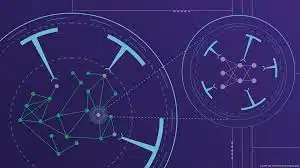- Understanding Neural Architecture Search
- The Importance of Automated Model Design
- Techniques in Neural Architecture Search
- Challenges and Considerations
- Real-World Applications
- Future Trends and Insights

In recent years, advancements in artificial intelligence and machine learning have transformed how we approach model design and architecture selection. Traditional methods often rely on expert intuition and exhaustive trial-and-error processes, which can be both time-consuming and inefficient. This is where Neural Architecture Search (NAS) comes into play, streamlining the process of finding optimal neural network structures.
Understanding Neural Architecture Search
Neural Architecture Search is a subfield of machine learning that automates the process of designing neural networks. By leveraging various algorithms—such as reinforcement learning, evolutionary strategies, and gradient-based optimization—NAS efficiently explores a vast space of potential architectures. This enables researchers and developers to identify configurations that perform exceptionally well on specific tasks without extensive manual effort.
The Importance of Automated Model Design
Automated model design offers several advantages over conventional approaches. First and foremost, it significantly reduces the time required to develop high-performing models. In traditional settings, data scientists may spend weeks or even months experimenting with different architectures. NAS expedites this by quickly evaluating countless designs and pinpointing the most effective ones based on performance metrics.
Another key benefit is the democratization of model design. With automated tools, individuals with limited experience in deep learning can create competitive models. This inclusivity supports innovation and fosters a broader range of applications across various industries.
Techniques in Neural Architecture Search
There are several methods employed within NAS, each with its unique strengths:
-
Reinforcement Learning: In this approach, a controller network generates architectures, which are then evaluated based on their performance. The results inform the controller about which architectural decisions lead to better results, allowing it to learn and refine its outputs iteratively.
-
Evolutionary Algorithms: Inspired by biological evolution, this method generates a population of architectures and applies mutation and crossover operations to create new generations. The best-performing architectures are retained and evolved until an optimal solution emerges.
-
Gradient-Based Optimization: This technique formulates architecture search as a continuous optimization problem. By introducing a differentiable approximation of the architecture design space, it can compute gradients and optimize architectures directly.
Challenges and Considerations
Despite its promise, Neural Architecture Search is not without its difficulties. The computational resource requirements can be substantial, often necessitating specialized hardware like GPUs or TPUs for efficient training and evaluation. Additionally, the search space can be vast, leading to challenges in convergence and the risk of overfitting.
Moreover, balancing exploration and exploitation is crucial. An effective NAS strategy must not only discover new architectures but also refine existing ones based on performance feedback. Striking this balance is fundamental to the success of automated model design.
Real-World Applications
Various industries are beginning to harness the power of NAS. In the field of healthcare, researchers are using automated model design to develop predictive models that can identify diseases from medical imaging data. Similarly, in finance, companies are deploying NAS to optimize trading algorithms and risk assessment models.
Beyond these sectors, NAS is also making waves in natural language processing (NLP) and computer vision. The ability to tailor neural architectures to specific tasks enhances performance, driving advancements in areas like sentiment analysis, image classification, and more.
Future Trends and Insights
As research continues to evolve, we can expect further enhancements in the efficiency and effectiveness of Neural Architecture Search. Techniques combining NAS with transfer learning and domain adaptation could lead to even better results. Additionally, as cloud computing becomes more accessible, more organizations will be able to utilize these sophisticated methods, further democratizing AI development.
In conclusion, Neural Architecture Search is a game-changer for automated model design, allowing for rapid exploration and optimization of neural networks. By overcoming traditional barriers, this innovative approach is set to contribute significantly to the ongoing evolution of machine learning applications across various domains.